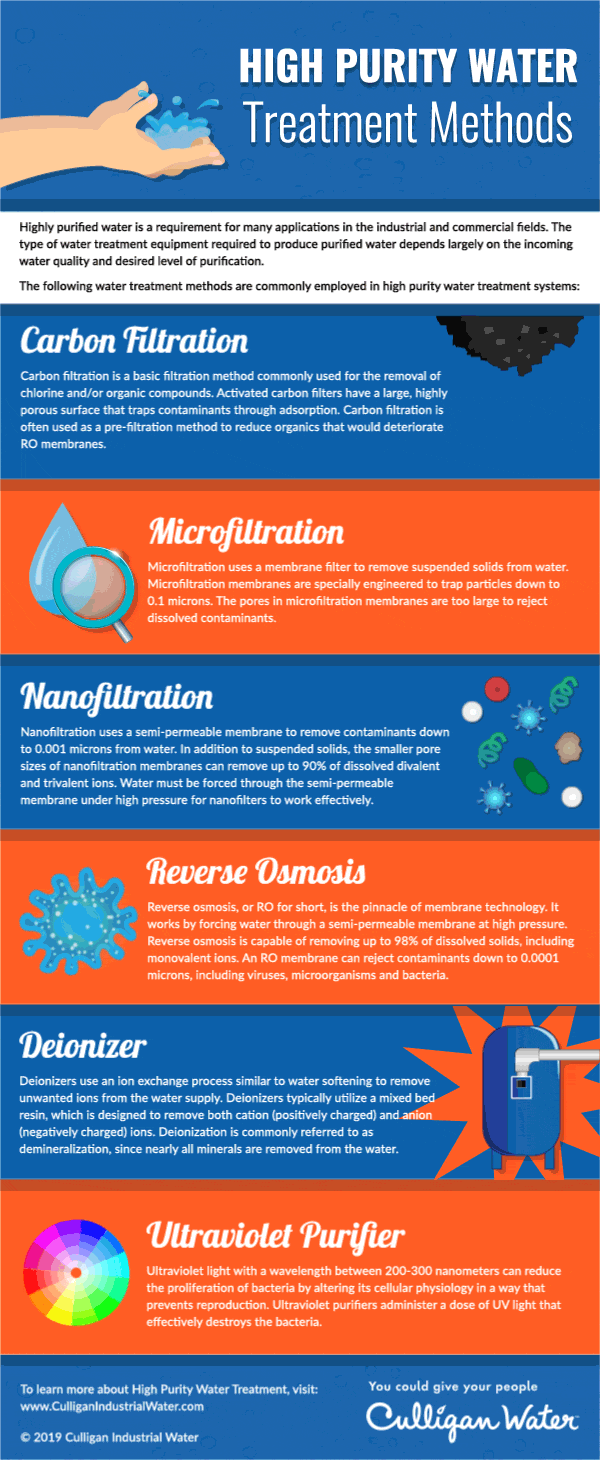
High Purity Water Treatment Animation
HIGH PURITY WATER Treatment Methods Highly purified water is a requirement for many applications in the industrial and commercial fields. The type of water treatment equipment required to produce purified water depends largely on the incoming water quality and desired level of purification. The following water treatment methods are commonly employed in high purity water treatment systems: Carbon Filtration Carbon filtration is a basic filtration method commonly used for the removal of chlorine and/or organic compounds. Activated carbon filters have a large, highly porous surface that traps contaminants through adsorption. Carbon filtration is often used as a pre-filtration method to reduce organics that would deteriorate RO membranes. Microfiltration Microfiltration uses a membrane filter to remove suspended solids from water. Microfiltration membranes are specially engineered to trap particles down to 0.1 microns. The pores in microfiltration membranes are too large to reject dissolved contaminants. Nanofiltration Nanofiltration uses a semi-permeable membrane to remove contaminants down to 0.001 microns from water. In addition to suspended solids, the smaller pore sizes of nanofiltration membranes can remove up to 90% of dissolved divalent and trivalent ions. Water must be forced through the semi-permeable membrane under high pressure for nanofilters to work effectively. Reverse Osmosis Reverse osmosis, or RO for short, is the pinnacle of membrane technology. It works by forcing water through a semi-permeable membrane at high pressure. Reverse osmosis is capable of removing up to 98% of dissolved solids, including monovalent ions. An RO membrane can reject contaminants down to 0.0001 microns, including viruses, microorganisms and bacteria. Deionizer Deionizers use an ion exchange process similar to water softening to remove unwanted ions from the water supply. Deionizers typically utilize a mixed bed resin, which is designed to remove both cation (positively charged) and anion (negatively charged) ions. Deionization is commonly referred to as demineralization, since nearly all minerals are removed from the water. Ultraviolet Purifier Ultraviolet light with a wavelength between 200-300 nanometers can reduce the proliferation of bacteria by altering its cellular physiology in a way that prevents reproduction. Ultraviolet purifiers administer a dose of UV light that effectively destroys the bacteria. To learn more about High Purity Water Treatment, visit: You could give your people www.CulliganindustrialWater.com Culligan Water © 2019 Culligan Industrial Water
High Purity Water Treatment Animation
Source
https://www....water.com/Category
BusinessGet a Quote











